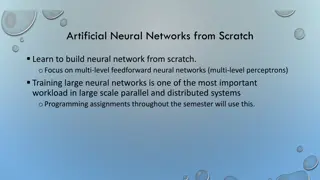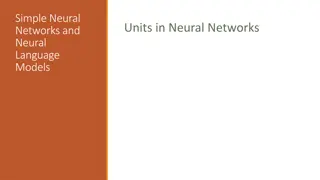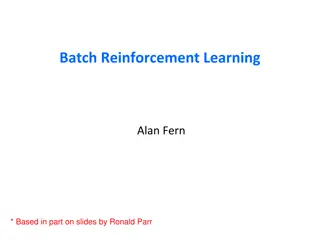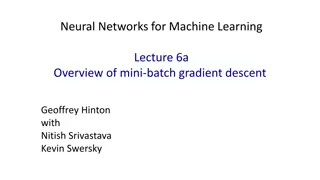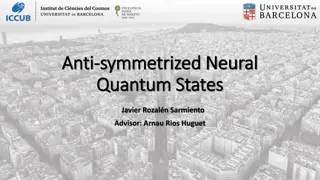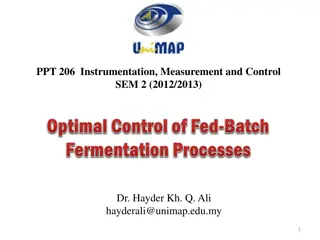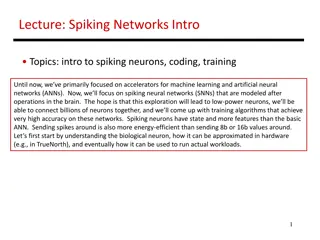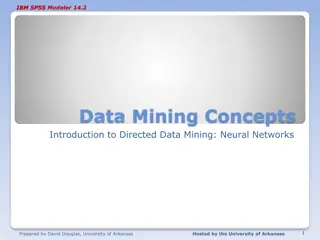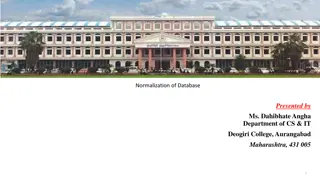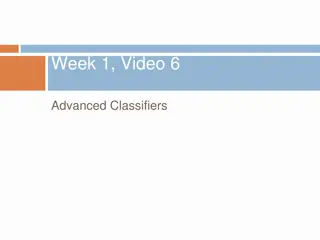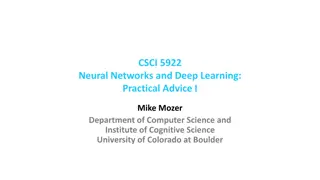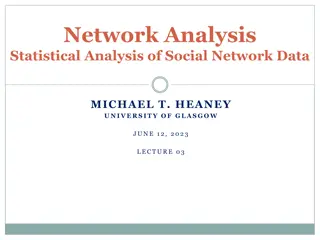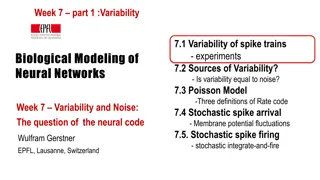Batch Normalization in Neural Networks
Batch Normalization (BN) is a technique used in neural networks to improve training efficiency by reducing internal covariate shift. This process involves normalizing input data to specific ranges or mean and variance values, allowing for faster convergence in optimization algorithms. By standardizing the distribution of activation components, BN helps maintain consistency in neural network performance. Learn about the significance of feature scaling, whitening, and the benefits of Batch Normalization in this informative content.
Download Presentation

Please find below an Image/Link to download the presentation.
The content on the website is provided AS IS for your information and personal use only. It may not be sold, licensed, or shared on other websites without obtaining consent from the author.If you encounter any issues during the download, it is possible that the publisher has removed the file from their server.
You are allowed to download the files provided on this website for personal or commercial use, subject to the condition that they are used lawfully. All files are the property of their respective owners.
The content on the website is provided AS IS for your information and personal use only. It may not be sold, licensed, or shared on other websites without obtaining consent from the author.
E N D
Presentation Transcript
Batch Normalization: Accelerating Deep Network Training by Reducing Internal Covariate Shift CS838
The range of values of raw training data often varies widely Example: Has kids feature in {0,1} Value of car: $500-$100 sk In machine learningalgorithms, the functions involved in the optimization process are sensitive to normalization For example: Distance between two points by the Euclidean distance. If one of the features has a broad range of values, the distance will be governed by this particular feature. After, normalization, each feature contributes approximately proportionately to the final distance. Motivation Old school related concept: In general, Gradient descent converges much faster with feature scaling than without it. Feature scaling Good practice for numerical stability for numerical calculations, and to avoid ill-conditioning when solving systems of equations.
Two methods are usually used for rescaling or normalizing data: Scaling data all numeric variables to the range [0,1]. One possible formula is given below: http://3.bp.blogspot.com/_xqXlcaQiGRk/RpO4CR0oKqI/AAAAAAAAAA0/TnshqtR_ndw/s200/fig1.png Common normalizations To have zero mean and unit variance: In the NN community this is call Whitening
The first guy tells the second guy, go water the plants , the second guy tells the third guy, got water in your pants , and so on until the last guy hears, kite bang eat face monkey or something totally wrong. Internal covariate shift: Let s say that the problems are entirely systemic and due entirely to faulty red cups. Then, the situation is analogous to forward propagation The cup game example If can get new cups to fix the problem by trial and error, it would help to have a consistent way of passing messages in a more controlled and standardized ( normalized ) way. e.g: Same volume, same language, etc. First layer parameters change and so the distribution of the input to your second layer changes
Batch Normalization (BN) is a normalization method/layer for neural networks. Proposed Solution: Batch Normalization (BN) Usually inputs to neural networks are normalized to either the range of [0, 1] or [-1, 1] or to mean=0 and variance=1 BN essentially performs Whitening to the intermediate layers of the networks.
BN reduces Covariate Shift. That is the change in distribution of activation of a component. By using BN, each neuron's activation becomes (more or less) a Gaussian distribution, i.e. its usually not active, sometimes a bit active, rare very active. Batch normalization Why it is good? Covariate Shift is undesirable, because the later layers have to keep adapting to the change of the type of distribution (instead of just to new distribution parameters, e.g. new mean and variance values for Gaussian distributions). BN reduces effects of exploding and vanishing gradients, because every becomes roughly normal distributed. Without BN, low activations of one layer can lead to lower activations in the next layer, and then even lower ones in the next layer and so on.
Batch Normalization also makes training more resilient to the parameter scale. Normally, large learning rates may increase the scale of layer parameters, which then amplify the gradient during backpropagation and lead to the model explosion The BN transformation is scalar invariant However, with Batch Normalization, backpropagation through a layer is unaffected by the scale of its parameters. Indeed, for a scalar a,
BN reduces training times. (Because of less Covariate Shift, less exploding/vanishing gradients.) BN reduces demand for regularization, e.g. dropout or L2 norm. Batch normalization: Other benefits in practice Because the means and variances are calculated over batches and therefore every normalized value depends on the current batch. I.e. the network can no longer just memorize values and their correct answers.) BN allows higher learning rates. (Because of less danger of exploding/vanishing gradients.) BN enables training with saturating nonlinearities in deep networks, e.g. sigmoid. (Because the normalization prevents them from getting stuck in saturating ranges, e.g. very high/low values for sigmoid.)
Batch normalization: Better accuracy , faster. BN applied to MNIST (a), and activations of a randomly selected neuron over time (b, c), where the middle line is the median activation, the top line is the 15th percentile and the bottom line is the 85th percentile.
Normalizes layer inputs to zero mean and unit variance. whitening. Naive method: Train on a batch. Update model parameters. Then normalize. Doesn't work: Leads to exploding biases while distribution parameters (mean, variance) don't change. Why the na ve approach Does not work? If we do it this way gradient always ignores the effect that the normalization for the next batch would have i.e. : The issue with the above approach is that the gradient descent optimization does not take into account the fact that the normalization takes place
A proper method has to include the current example batch andsomehow all previous batches ( all examples) in the normalization step. This leads to calculating in covariance matrix and its inverse square root. That's expensive. The authors found a faster way! Doing it the correct way Is too expensive!
The proposed solution: To add an extra regularization layer A new layer is added so the gradient can see the normalization and make adjustments if needed.
Each feature (component) is normalized individually Normalization according to: componentNormalizedValue = (componentOldValue - E[component]) / sqrt(Var(component)) Algorithm Summary: Normalization via Mini-Batch Statistics A new layer is added so the gradient can see the normalization and made adjustments if needed. The new layer has the power to learn the identity function to de-normalize the features if necessary! Full formula: newValue = gamma * componentNormalizedValue + beta (gamma and beta learned per component) E and Var are estimated for each mini batch. BN is fully differentiable. Formulas for gradients/backpropagation are at the end of chapter 3 (page 4, left).
The Batch Transformation: formally from the paper.
Alg 1 (previous slide) Architecture modification The full algorithm as proposed in the paper Note that BN(x) is different during test Vs.
In algorithm 1, we are estimating the true mean and variance over the entire population for a given batch. When doing inference you re minibatching your way through the entire dataset, you re calculating statistics on a per sample/batch basis. We want our sample statistics to be unbiased to population statistics. Populations stats vs. sample stats
Increase learning rate. Remove Dropout. Shuffle training examples more thoroughly Reduce the L2 weight regularization. Accelerate the learning rate decay. Reduce the photometric distortions. ACCELERATING BN NETWORKS Batch normalization only not enough!
Blog posts https://gab41.lab41.org/batch-normalization-what-the-hey- d480039a9e3b#.s4ftttada https://kratzert.github.io/2016/02/12/understanding-the-gradient-flow- through-the-batch-normalization-layer.html A lecture mentioning the technique: https://www.youtube.com/watch?v=gYpoJMlgyXA&feature=youtu.be&li st=PLkt2uSq6rBVctENoVBg1TpCC7OQi31AlC&t=3078 Paper summaries: https://github.com/aleju/papers/blob/master/neural- nets/Batch_Normalization.md https://wiki.tum.de/display/lfdv/Batch+Normalization https://aresearch.wordpress.com/2015/11/05/batch-normalization- accelerating-deep-network-training-b-y-reducing-internal-covariate- shift-ioffe-szegedy-arxiv-2015/ Useful links Q&A: http://stats.stackexchange.com/questions/215458/what-is-an- explanation-of-the-example-of-why-batch-normalization-has-to-be- done
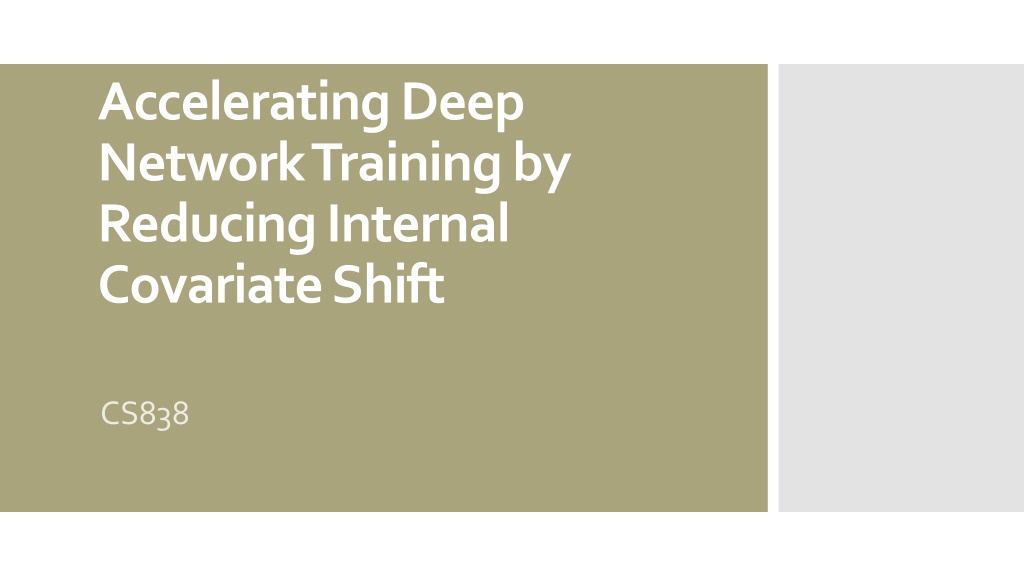
 undefined
undefined



